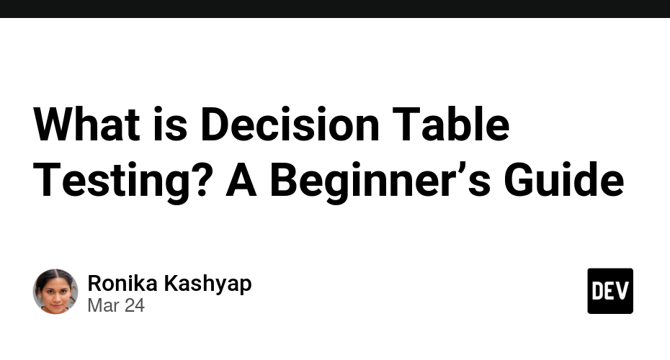Dev
1M
135

Image Credit: Dev
What is Decision Table Testing? A Beginner’s Guide
- Decision table testing is a black-box technique that ensures comprehensive coverage of input conditions and outcomes in a structured tabular format.
- It consists of conditions, actions, and rules defining decision logic in a visual way, aiding in catching defects before impacting users.
- Creating a decision table involves identifying input conditions, defining possible outcomes, constructing a table, and optimizing test cases.
- Decision table types include extended entry, limited entry, and cause-effect, catering to different testing needs.
- Benefits of decision table testing include covering all input combinations, improving communication, and reusability.
- Challenges include binary output, lack of subjective insights, and the need for skilled testers to handle complex tables.
- Best practices suggest prioritizing test cases, utilizing automation, refreshing tables, maintaining a consistent format, boundary testing, and starting simple.
- Tools like DecisionRules.io, Google Sheets, and CoTester by TestGrid can assist in creating decision tables based on complexity and automation needs.
- Decision table testing simplifies complex decision-making processes, enhances software reliability, and minimizes oversights by providing a clear, structured testing approach.
- Following best practices and leveraging appropriate tools can streamline the testing efforts and optimize quality assurance in software development.
Read Full Article
8 Likes
For uninterrupted reading, download the app